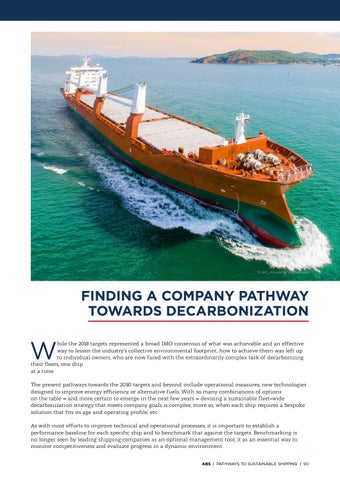© Iam_Anupong/Shutterstock
FINDING A COMPANY PATHWAY TOWARDS DECARBONIZATION
W
hile the 2018 targets represented a broad IMO consensus of what was achievable and an effective way to lessen the industry’s collective environmental footprint, how to achieve them was left up to individual owners, who are now faced with the extraordinarily complex task of decarbonizing their fleets, one ship at a time. The present pathways towards the 2030 targets and beyond include operational measures, new technologies designed to improve energy efficiency, or alternative fuels. With so many combinations of options on the table — and more certain to emerge in the next few years — devising a sustainable fleet-wide decarbonization strategy that meets company goals is complex; more so, when each ship requires a bespoke solution that fits its age and operating profile, etc. As with most efforts to improve technical and operational processes, it is important to establish a performance baseline for each specific ship and to benchmark that against the targets. Benchmarking is no longer seen by leading shipping companies as an optional management tool; it as an essential way to monitor competitiveness and evaluate progress in a dynamic environment. ABS | PATHWAYS TO SUSTAINABLE SHIPPING | 90





